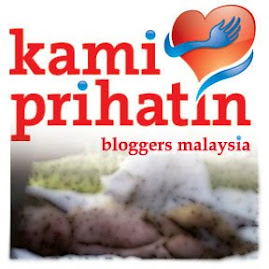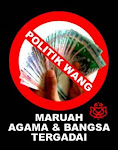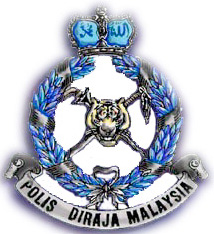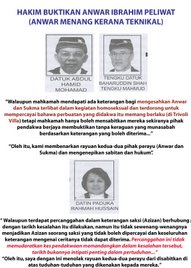Prime Minister Datuk Seri Najib Tun Razak launched the 2014 annual GTP and ETP reports on Tuesday, outlining five key performance indicators from 2010.
The five key indicators were:
1) The per capita income of Malaysians increased from US$7,059 in 2009 to US$10,426 in 2014;
2) The value of investment remained high with investment totalling RM142bil in 2009, and increasing to RM228bil in 2014;
3) From 2010 to 2014, 1.5 million new jobs were created in NKEA sectors;
4) More than five million people in rural areas received basic amenities including electricity supply and clean water since the GTP and ETP were implemented; and
5) Almost 170,000 poor people escapes the poverty cycle after their incomes increased during the five years.
The achievements were supported by various initiatives and investments, benefiting Sabah and Sarawak as well.
In his speech, the Prime Minister also listed out the projects and programmes which had major positive impact on the people:
* Investment activities in the Pengerang Integrated Complex with an investment value of US$27bil by 2019 and capable of providing up to 4,000 jobs to the people.
* 242km of roads constructed, 6,000 houses received clean water supply, 13,000 families received electricity supply and 5,500 new homes built.
* 307 Klinik 1Malaysia were set up throughout the country since 2010 in urban and rural areas benefiting more than 15.8 million registered cases.
* Seven million households enjoyed the Bantuan Rakyat 1Malaysia (BRIM).
* 161 Kedai Rakyat 1Malaysia (KRIM) were set up since 2010 offering products which are 15% to 30% cheaper than the market price.
* More than five million people in rural areas received facilities like roads, clean water and electricity supply since 2010.
* 4,553km of rural roads built between 2010 and 2014.
* Bus Rapid Transit or BRT Sunway Line service by Prasarana Malaysia Berhad due for completion by June 2015 for the benefit of 500,000 residents in Subang Jaya and Bandar Sunway.
* Phase 1 of the Ampang LRT Track Extension Project would be completed by October 2015, benefiting residents in Sri Petaling, Bukit Jalil and Puchong.
* Almost 170,000 people from the lower income group benefited from the poverty eradication programme or 1AZAM, and almost 65,000 families were assisted through capacity and skills development.
* More than RM100mil in aid were given to almost 130,000 pre-school pupils in private institutions and from the lower-income households.
* School fees assistance amounting to almost RM7.5mil were enjoyed by more than 3,000 children in private nurseries.
* 13 more schools were identified as High Performance Schools in 2014, bringing the total to 128.
* Under the GTP, the national crime index rate was reduced by as much as 40% in the past five years.
* Car thefts reduced to almost 20% in 2014.
* The Corruption Perception Index (CPI) under the Anti-Corruption NKRA increased from level 44 in 2010 to level 52 in 2014 out of 175 nations.
* National Gross Domestic Product among the highest in Asean nations with a 6% growth compared to the 5.7% estimate by the World Bank.
* 64% of total investment value in 2014 were from the private sector.
* Attaining ETP based on overall achievement by 2010, which is achieving the per capita income of US$15,000, creating 3.3 million job opportunities, and gaining US$444bil in investments.
* The MRT Sungai Buloh Kajang Route Project which as of 2014, was ahead of schedule with 59% completed, and expected to be operational by July 2017.
* The MRT project provided job opportunities to about 2,800 Malaysian engineers.
* The Sungai Kelang and Sungai Gombak river clean-up project at 53% completion. Among the initiatives, which have been completed are eight river water treatment plants and four waste water treatment plants.
* Since 2011, almost 2,000 retail entrepreneurs benefited from the retail store transformation programme (Tukar) under the Wholesale and Retail NKRA.
* The number of tourists to Malaysia increased by 6.7% to almost 28 million during the 2014 Visit Malaysia Year.
* The Government approved one more mega project in South-East Asia near the KLIA, called the Mitsui Outlet Park, which will begin operations by the middle of this year.
* The High Value Herbal Products Initiative helped increase the value of these products. For instance, the raw Tongkat Ali herb which was RM2 per kilogramme jumped to RM2,800 per kilogramme after the standardisation process.
* The number of skilled workers will be increased to 50% of the total work force by 2020.
* Female workforce will be increased to 55% by the end of 2015.
* Almost RM48bil in business opportunities, sponsorship and education created for bumiputras.
* Programmes to increase bumiputra access to sponsorship and markets - Dana Teras worth RM2bil, Dana Halal (RM580mil), and Skim Jejak Jaya Bumiputra.
* The overall KPI for the NKRAs was 105%, while in general, the NKEA exceeded its target and reached 110%.
* The Report on Ease of Doing Business Index issued by the World Bank placed Malaysia at 18th place, compared to 20 previously.
* IMD World Competitiveness Yearbook 2014 reported Malaysia's position improved to 12th place from 15.
Subscribe to:
Post Comments (Atom)














 Malaysian Ringgit Converter
Malaysian Ringgit Converter
























1 comment:
Pertunjukan bagus. adakah kehidupan harian kita baik daripada tahun lepas. Berapa ramai kah melayu yang akuannya lebih RM900.00 dalam TH dan ASB ? Berapa ramaikah pemuda melayu bawah 40 tahun yang berpendapatan lebih RM120,000.00 setahun? Berapa ramai pelajar melayu berada di TOP 50 SPM ?
Post a Comment